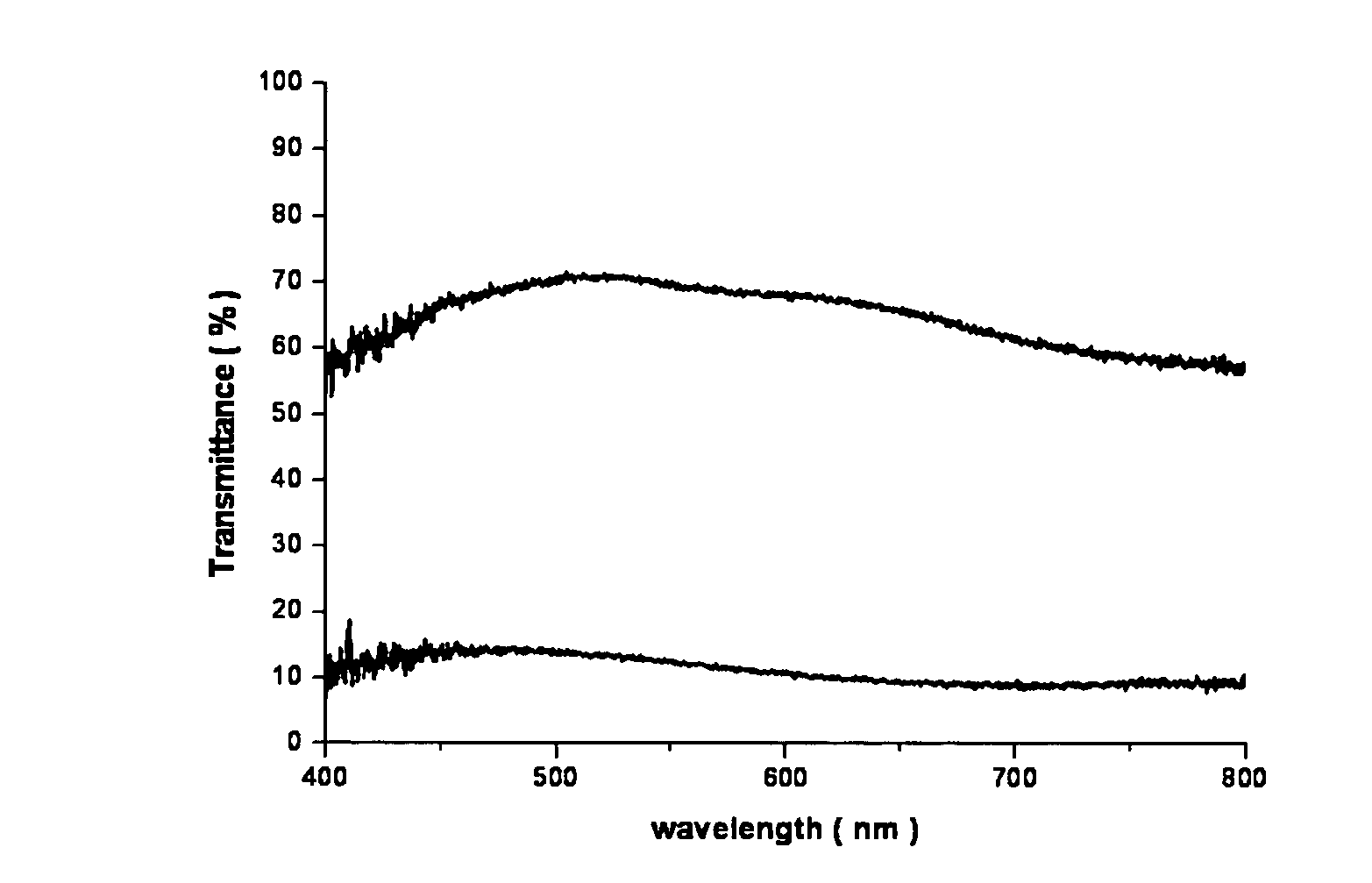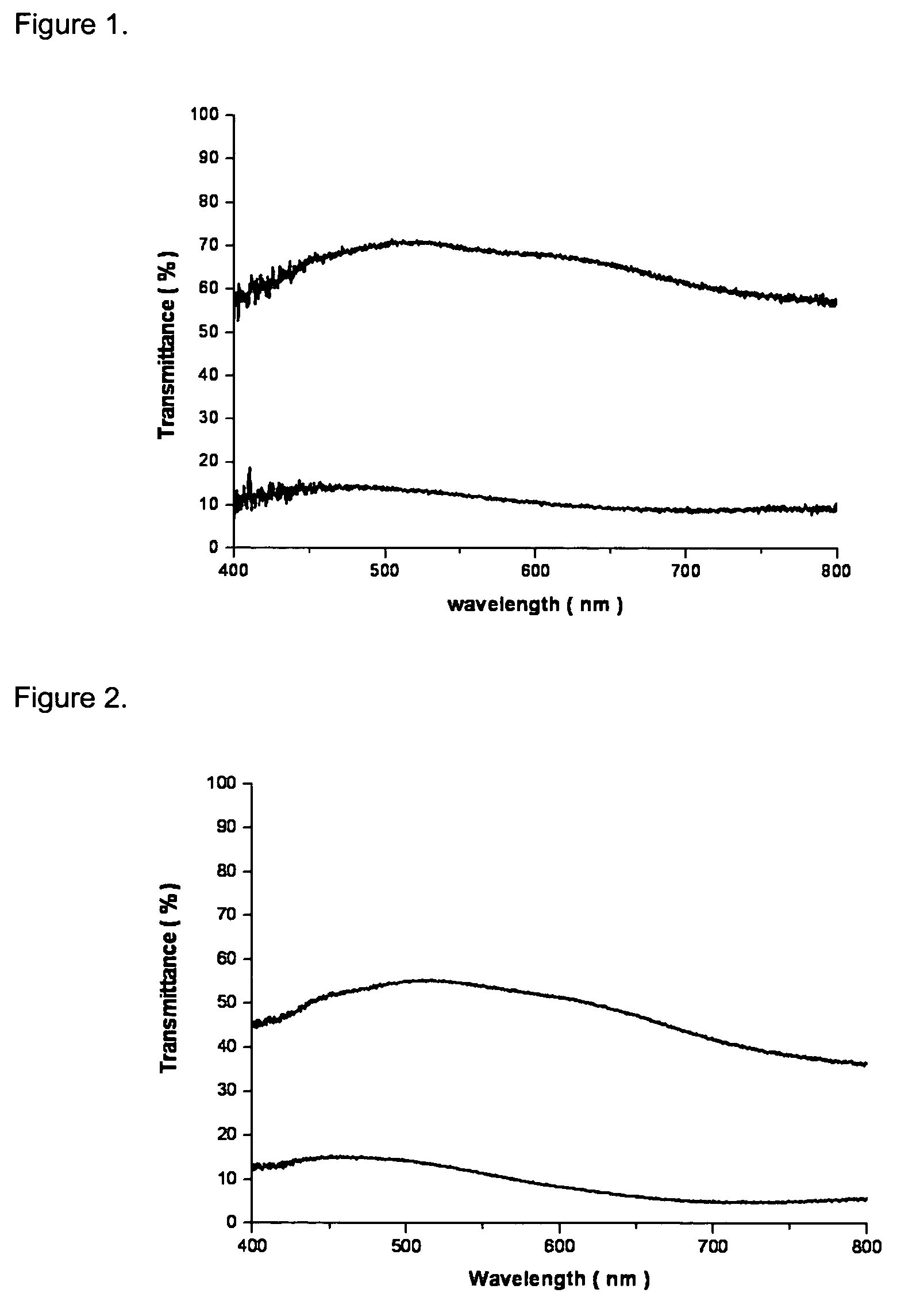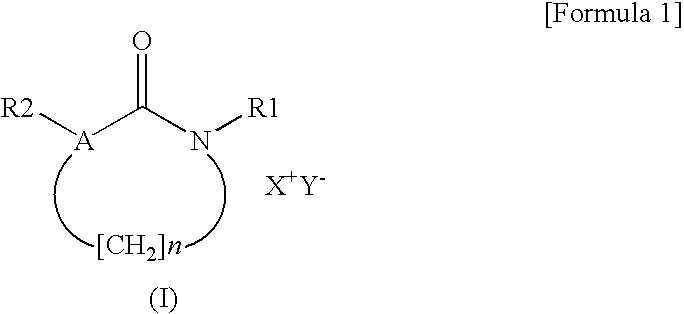Electrode comprising lithium nickel oxide layer, method for preparing the same, and electrochromic device comprising the same
a lithium nickel oxide and electrode technology, applied in the field of electrodes comprising lithium nickel oxide layers, can solve the problems of low coloring and decoloring speed, low color and decoloring speed, and no electrochromic devices have been commercially mass-produced so far, and achieve excellent electrochromic properties and less limitation in applied voltage and treatment conditions
- Summary
- Abstract
- Description
- Claims
- Application Information
AI Technical Summary
Benefits of technology
Problems solved by technology
Method used
Image
Examples
example 1
[0055]The lithium nickel oxide (LixNi1−yO) thin layer was deposited on the glass substrate on which FTO transparent conductive film was formed by using sputtering from LiNiO2 target. To improve the adhesion between the FTO glass substrate and the electrochromic material, they were treated with heat for 30 minutes at 300° C., followed by slow cooling. Formatting of the lithium nickel oxide (LixNi1−yO) was performed in a glove box by using platinum as a counter electrode in propylene carbonate electrolyte (temperature: 60° C.) containing 1 M LiCLO4. After completing oxidization of the deposited lithium nickel oxide (LixNi1−yO) of 200 nm in thickness, reductive voltage was applied thereto to give a colorless transparent lithium nickel oxide thin layer. When formatting was performed at the oxidative-reductive applied voltage (2.0 V / −2.0V), the transmittance of the electrode containing the colorless transparent lithium nickel oxide layer was 5˜76%. The formatted lithium nickel oxide elec...
example 2
[0056]An electrochromic device was prepared by the same manner as described in Example 1. A eutectic mixture of acetamide and lithium trifluoromethanesulfonimide (LiTFSI) was used as electrolyte. At the oxidative (+1.7 V)-reductive (−1.2 V) applied voltage, the transmittance of the device was 13%˜73%.
[0057]Tungsten oxide (WO3), a reductive electrochromic material, acts as a catalyst in an organic solvent such as propylene carbonate (PC), so that it decomposes the electrolyte therein. The eutectic mixture used as the electrolyte in Example 2 was in the form of a salt which did not induce side-reaction and thus increased durability of the device.
PUM
| Property | Measurement | Unit |
|---|---|---|
| light transmittance | aaaaa | aaaaa |
| temperature | aaaaa | aaaaa |
| thickness | aaaaa | aaaaa |
Abstract
Description
Claims
Application Information
 Login to View More
Login to View More - R&D
- Intellectual Property
- Life Sciences
- Materials
- Tech Scout
- Unparalleled Data Quality
- Higher Quality Content
- 60% Fewer Hallucinations
Browse by: Latest US Patents, China's latest patents, Technical Efficacy Thesaurus, Application Domain, Technology Topic, Popular Technical Reports.
© 2025 PatSnap. All rights reserved.Legal|Privacy policy|Modern Slavery Act Transparency Statement|Sitemap|About US| Contact US: help@patsnap.com



